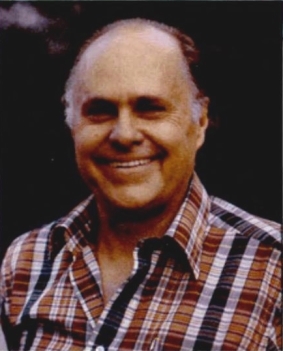
The Curtiss JN "Jenny" was a series of biplanes built by the Curtiss Aeroplane Company of Hammondsport, New York, later the Curtiss Aeroplane and Motor Company. Although the Curtiss JN series was originally produced as a training aircraft for the US Army, the "Jenny" continued after World War I as a civil aircraft, as it became the "backbone of American postwar [civil] aviation".

The TI-99/4 and TI-99/4A are home computers released by Texas Instruments in 1979 and 1981, respectively. Based on the Texas Instruments TMS9900 microprocessor originally used in minicomputers, the TI-99/4 was the first 16-bit home computer. The associated video display controller provides color graphics and sprite support which were only comparable with those of the Atari 400 and 800 released a month after the TI-99/4.

The Curtiss OX-5 was an early V-8 American liquid-cooled aircraft engine built by Curtiss. It was the first American-designed aircraft engine to enter mass production, although it was considered obsolete when it did so in 1917. It nevertheless found widespread use on a number of aircraft, perhaps the most famous being the JN-4 "Jenny". Some 12,600 units were built through early 1919. The wide availability of the engine in the surplus market made it common until the 1930s, although it was considered unreliable for most of its service life.

Curtiss Aeroplane and Motor Company was an American aircraft manufacturer originally founded by Glenn Hammond Curtiss and Augustus Moore Herring in Hammondsport, New York. After significant commercial success in its first decades, it merged with the Wright Aeronautical to form Curtiss-Wright Corporation.

Katherine Stinson was an American aviation pioneer who, in 1912, became the fourth woman in the United States to earn the FAI pilot certificate. She set flying records for aerobatic maneuvers, distance, and endurance. She was the first female pilot employed by the U.S. Postal Service and the first civilian pilot to fly the mail in Canada. She was also one of the first pilots to ever fly at night and the first female pilot to fly in Canada and Japan.
Ohio Scientific, Inc., was a privately owned American computer company based in Ohio that built and marketed computer systems, expansions, and software from 1975 to 1986. Their best-known products were the Challenger series of microcomputers and Superboard single-board computers. The company was the first to market microcomputers with hard disk drives in 1977.

College Park Airport is a public airport located in the City of College Park, in Prince George's County, Maryland, United States. It is the world's oldest continuously operated airport. The airport is located south of Paint Branch and Lake Artemesia, east of U.S. Route 1 and the College Park Metro/MARC station and west of Kenilworth Avenue.

80 Micro was a computer magazine, published between 1980 and 1988, that featured program listings, products and reviews for the TRS-80.

Kilobaud Microcomputing was a magazine dedicated to the computer homebrew hobbyists from 1977 to 1983.

Santa Paravia en Fiumaccio is a video game in which each player becomes the ruler of a fledgling Italian city-state around the year 1400. The goal of the game is to become king or queen; to do so the player must manage their city-state so that it may grow.

United States airmail was a service class of the United States Post Office Department (USPOD) and its successor United States Postal Service (USPS) delivering air mail by aircraft flown within the United States and its possessions and territories. Letters and parcels intended for air mail service were marked as "Via Air Mail", appropriately franked, and assigned to any then existing class or sub-class of the Air Mail service.

Wayne Sanger Green II was an American publisher, writer, and consultant. Green was editor of CQ magazine before he went on to found 73, 80 Micro, Byte, CD Review, Cold Fusion, Kilobaud Microcomputing, RUN, InCider, and Pico, as well as publishing books and running Instant Software.

The Curtiss Model 41 Lark was a commercial biplane manufactured by Curtiss Aeroplane and Motor Company that was used by pioneering airmail, airline and bush pilots in the 1920s.

Space Battle is a 1978 video game developed by Level IV for the TRS-80 16K Level II microcomputer.

Air Raid is a fixed shooter video game published by Small System Software for the TRS-80 Level I or II in 1978. It is an adaptation of the game TARGET, developed for the Sol-20 by Steve Dompier.

Meta-Trek is a 1980 video game published on disk only by The Alternate Source for TRS-80 32K microcomputers.
Instant Software was a company that produced game, utility, and education software in the late 1970s and early 1980s primarily for the TRS-80 line of home computers. Instant Software was a subsidiary of Kilobaud Microcomputing, headquartered in Peterborough, New Hampshire and run by Wayne Green.

The SWTPC 6800 Computer System, simply referred to as SWTPC 6800, is an early microcomputer developed by the Southwest Technical Products Corporation and introduced in 1975. Built around the Motorola 6800 microprocessor from which it gets its namesake, the SWTPC 6800 was one of the first microcomputers based around that microprocessor. It is the progenitor of the widely used and broadly supported SS-50 bus. The SWTPC 6800 became one of the most popular 6800-based systems of its time, owing to its ease of use and ample documentation. Though rudimentary, the MIKBUG resident monitor built into ROM allows the immediate entry of program data after power-up, as opposed to other microcomputers of its day which required bootstrapping such software. Southwest Technical Products introduced the SWTPC 6800 in November 1975 for US$450 in kit form only. Any contemporary ASCII terminal can be used to interface with the SWTPC 6800. SWTPC sold their own television-set-based terminal, for $275; a crude dot-matrix printer was another optional accessory, for $250.
The Stratos was a Z80-based microcomputer introduced by Symbiotic Systems, Inc., in 1981.
Gimix, Inc., was an American electronics and computer company based in Chicago, Illinois, founded by Robert C. Philips. Established in 1975, the company was initially Philips's vehicle for selling his various remote-controlled devices he had developed as the result of a life-long interest in electronics and experiments with home automation for himself and other clients. In 1979, the company introduced the first in a series of 68xx-based microcomputers dubbed the Ghost. It proved successful among various businesses and universities and allowed the company to survive into at least the early 1990s.

















